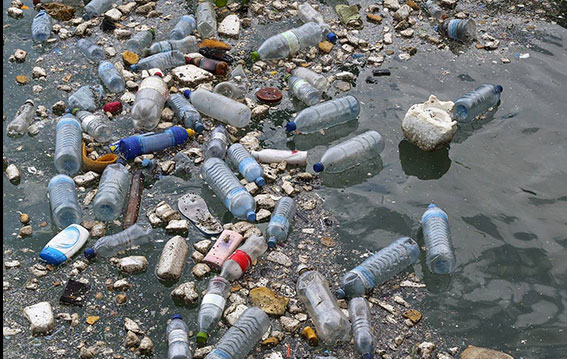Global water pollution is an increasingly severe environmental issue that affects the health of billions of people, the stability of ecosystems, and the global economy. Water pollution refers to the accumulation of harmful substances in water bodies, which can come from various sources such as industrial discharges, agricultural waste, and urban sewage. Below is an overview of the global water pollution situation and its impacts:
1. Current Status of Global Water Pollution
·
Sewage Discharge: According to reports from the United Nations, approximately 80% to 90% of wastewater is released into natural water bodies untreated or inadequately treated each year. These untreated sewage contain large amounts of harmful substances such as heavy metals, toxic chemicals, and pathogens.
·
·
Agricultural Pollution: Agriculture is a major source of water pollution, particularly due to the overuse of fertilizers and pesticides. Excessive use of these chemicals can run off into water bodies, causing water degradation, eutrophication, and harming aquatic life.
·
·
Industrial Pollution: Wastewater from industrial activities is another significant source of water pollution. These discharges often contain heavy metals, chemicals, and toxins that pollute water sources and disrupt aquatic ecosystems.
·
·
Plastic Pollution: Plastic waste, particularly microplastics, has become a serious global water pollution issue. Large amounts of plastic debris enter rivers, lakes, and oceans, threatening aquatic life and disrupting the ecological balance.
·
2. Impacts of Water Pollution
·
Health Hazards: Water pollution directly threatens human drinking water sources. Polluted water may contain harmful microorganisms and chemical toxins, leading to waterborne diseases such as cholera, hepatitis, and diarrhea. In developing countries, where sewage treatment infrastructure is often inadequate, water pollution leads to widespread illness and death.
·
·
Ecosystem Destruction: Water pollution disrupts the growth and reproduction of aquatic life. Eutrophication (excessive nutrients leading to algae blooms) can deplete oxygen in the water, threatening the survival of fish and other aquatic organisms. Heavy metal pollution can also accumulate in the food chain, ultimately affecting human health.
·
·
Economic Losses: Water pollution causes significant economic losses in industries such as fisheries, agriculture, and tourism. Reduced fish stocks, deteriorating agricultural irrigation water quality, and declining tourism due to polluted water bodies all contribute to economic harm.
·
3. Key Regions Affected by Water Pollution
·
Asia: Water pollution is particularly severe in parts of Asia, including China, India, and Southeast Asia. China faces major challenges due to industrial wastewater, agricultural runoff, and urban sewage, leading to significant water pollution. India also grapples with similar issues, especially in important water bodies like the Ganges River, which has been heavily polluted for years.
·
·
Africa: In Africa, the lack of infrastructure and effective sewage treatment systems makes water pollution a major issue. Many regions' rivers and lakes are severely polluted by human activities, and waterborne diseases are widespread.
·
·
Latin America: Countries in Latin America, such as Brazil and Mexico, also face water pollution problems. Industrial wastewater and untreated urban sewage are major contributors to water quality deterioration in many areas.
·
4. Main Sources of Water Pollution
·
Industrial Discharges: This includes the release of toxic chemicals, heavy metals, and petroleum products into rivers, lakes, and oceans, which severely pollute water sources.
·
·
Agricultural Runoff: Fertilizers, pesticides, and livestock waste from agricultural activities often flow into water bodies, contributing to water contamination and eutrophication.
·
·
Urban Sewage: Untreated urban sewage is directly discharged into natural water bodies, carrying harmful bacteria, viruses, and chemicals that degrade water quality.
·
·
Plastic and Waste: Plastic waste, particularly microplastics, pollutes water bodies on a global scale, impacting aquatic life and ecosystems.
·
5. Measures to Address Water Pollution
·
Improve Wastewater Treatment: Strengthening the construction of sewage treatment facilities in urban and industrial areas to ensure that wastewater is treated effectively before being discharged into water bodies.
·
·
Reduce Agricultural Pollution: Promoting organic and sustainable agricultural practices that reduce the use of pesticides and fertilizers, helping to protect water sources.
·
·
Control Plastic Pollution: Enhancing recycling and waste management systems to reduce plastic waste and prevent plastic from entering water bodies.
·
·
International Cooperation: Water pollution is a global issue that requires international cooperation. Countries need to work together on cross-border water resource protection and pollution control.
·
6. Future Outlook
With the growing global population, increasing industrialization, and urbanization, water pollution may become an even more serious issue in the coming years. Governments and organizations need to strengthen policy enforcement, raise public awareness, and promote technological innovations to reduce water pollution and ensure the sustainability of water resources.
In conclusion, water pollution is a major global challenge that threatens not only the environment and biodiversity but also human health and development. Protecting water resources and improving water quality will require collective global efforts and effective governance.




.png)




